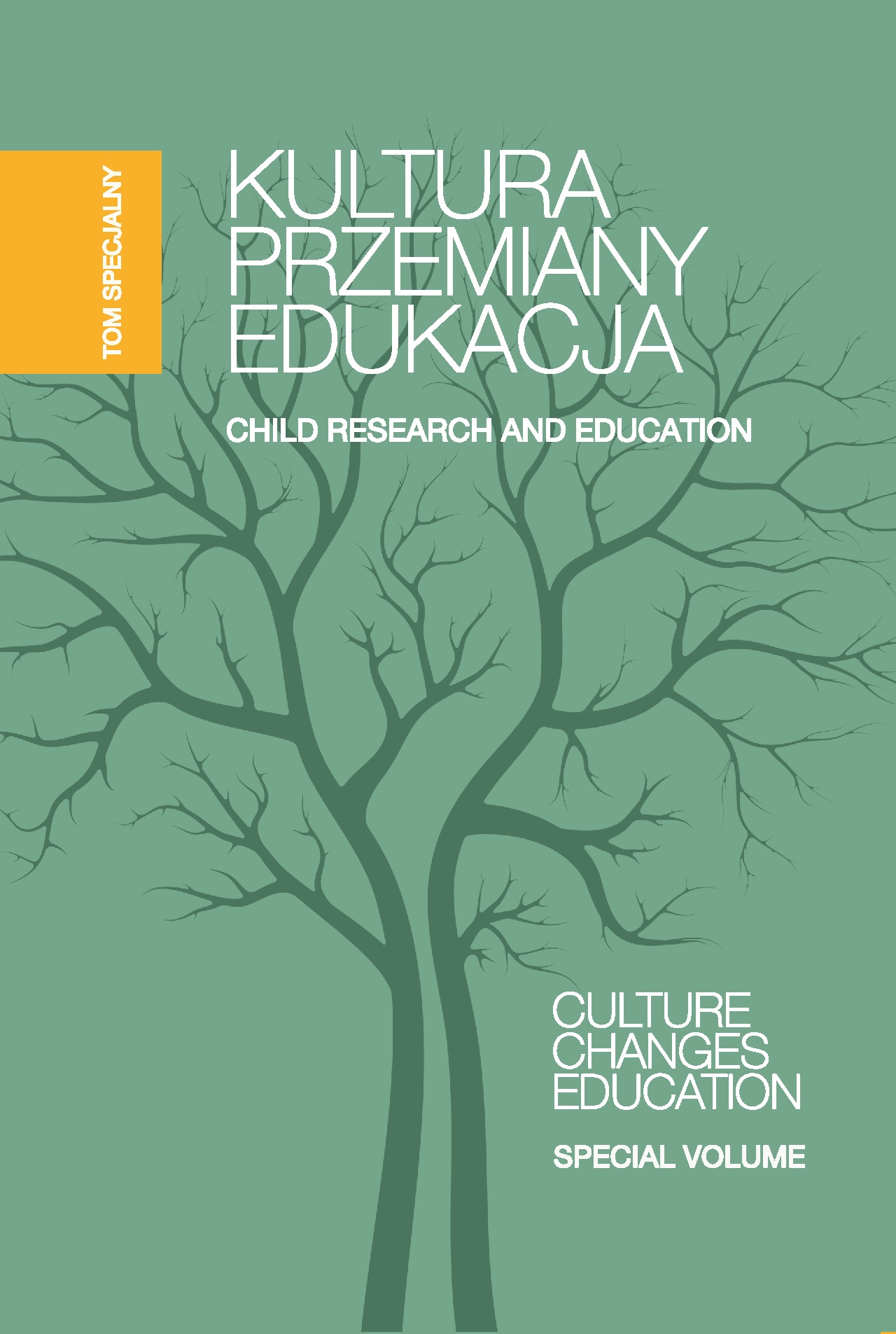Uczniowie z niepełnosprawnością wzroku w zmieniającej się rzeczywistości społecznej i edukacyjnej – obszary wymagające wsparcia
DOI:
https://doi.org/10.15584/kpe.spec.crae.2024.22Słowa kluczowe:
uczeń z niepełnosprawnością wzroku, edukacja, tranzycja, autostygmatyzacjaAbstrakt
Przeobrażenia dokonujące się w różnych obszarach życia społeczno-kulturowego niosą konsekwencje w zakresie funkcjonowania uczniów z niepełnoprawnością wzroku na każdym poziomie ich edukacji. Dotyczy to ich działania na rynku pracy, specyfiki kontaktów interpersonalnych, planowania swojej przyszłości etc. Zmiany kulturowo-społeczne powodują potrzebę dokonania refleksji nad umiejętnościami uczniów, przygotowaniem ich do pracy zawodowej i życia w zmieniającym się społeczeństwie. Dzięki rozwojowi elektroniki, informatyki i komunikacji w ostatnich latach osoby z niepełnosprawnością wzroku uzyskały lepszy dostęp do informacji i wiedzy, co stworzyło także nowe możliwości pracy i szansę pełnego uczestnictwa w życiu społecznym. Są oni nie tylko odbiorcami, ale i nadawcami informacji, aktywnie uczestniczącymi w wirtualnej rzeczywistości. Współczesna edukacja nie może pozostać obojętna na te przemiany. Wiedza ich dotycząca jest niezbędna, gdyż nowoczesne technologie niosą ze sobą nie tylko nowe możliwości, ale i zagrożenia. W wystąpieniu poruszone zostaną takie problemy jak kształcenie dziecka niewidomego i słabowidzącego, autostygmatyzacja, tranzycja z edukacji na rynek pracy.
Downloads
Bibliografia
Baumann M., Mayers R., LeBihan E., Haoussemand C., Mental health (GHQ12; CES-D) and attitudes towards the value of work among inmates of a semi-open prison and the long-term unemployed in Luxembourg, “BMC Public Health” 2008, nr 8.
Bell E.C., Mino N.M., Employment Outcomes for Blind and Visually Impaired Adults, “Journal of Blindness Innovation and Research” 2015, nr 5(2), http://dx.doi.org/10.5241/2F1-35.
Berger P.L., Zaproszenie do socjologii, Warszawa 2002.
Czerw A., Co ludzie myślą o pracy zawodowej? Konstrukcja metody diagnozującej postawy wobec pracy, „Psychologia Społeczna” 2013, nr 2(25).
Christian M.S., Garza A.S., Slaughter J.E., Work engagement: A quantitative review and test of its relations with task and contextual performance, “Personnel Psychology” 2011, nr 64, https://doi.org/10.1111/j.1744-6570.2010.01203.x.
Cimarolli V.R., Wang S., Differences in social support among employed and unemployed adults who are visually impaired, “Journal of Visual Impairment & Blindness” 2006, nr 100(9), https://doi.org/10.1177/0145482X0610000906.
Crocker J., Major B., Social Stigma and Self-Esteem: The Self-Protective Properties of Stigma, „Psychological Review” 1989, nr 96(4).
Czerwińska M., Kultura informacji osób z niepełnosprawnością wzroku w refleksji tyflologiczno-informatologicznej, „Interdyscyplinarne Konteksty Pedagogiki Specjalnej” 2017, nr 18.
Dobrow S.R., Tosti-Kharas J., Calling: The development of a scale measure, “Personnel Psychology” 2012, nr 64 (4), http:// doi:10.1111/j.1744-6570.2011.01234.x.
Gąciarz B., Giermanowska E., Zatrudniając niepełnosprawnych. Wiedza, opinie i doświadczenia pracodawców, Instytut Spraw Publicznych, Warszawa 2009.
Goertz Y.H., Van Lierop B.A., Houkes I., Nijhuis F.J., Factors related to the employment of visually impaired persons: A systematic literature review, “Journal of Visual Impairment & Blindness” 2010, nr 104(7).
Golub D.B., A Model of Successful Work Experience for Employees Who Are Visually Impaired: The Results of a Study, “Journal of Visual Impairment & Blindness” 2006, nr 100(2), https://doi:10.1177/0145482X0610001203.
Jaglarz E., Jakościowa charakterystyka stylu zarządzania miejscem pracy ze względu na warunki sprzyjające zatrudnianiu osób z niepełnosprawnością, „Niepełnosprawność. Dyskursy Pedagogiki Specjalnej” 2018, nr 30.
Kef S., Decovic M., The role of parental and peer support in adolescents well-being: a comparison of adolescents with and without a visual impairment, “Journal of Adolescence” 2004, nr 27(4).
Ogińska-Bulik N., Zasoby osobiste jako wyznaczniki radzenia sobie ze stresem u dzieci, „Acta Universitatis Lodziensis” 2001.
Pinquart M., Pfeiffer J.P., Identity development in German adolescents with and without visual impairments, “Journal of Visual Impairment & Blindness” 2013, nr 107.
Sęk H., Cieślak R., Wsparcie społeczne – sposoby definiowania, rodzaje i źródła wsparcia, wybrane koncepcje teoretyczne [w:] Wsparcie społeczne, stres i zdrowie, red. H. Sęk, R. Cieślak, Warszawa 2005.
Sękowski A., Klinkosz W., Powodzenie w studiach osób niewidomych i słabowidzących a niektóre cechy osobowości, „Czasopismo Psychologiczne” 2003, nr 9(1).
Pobrania
Opublikowane
Jak cytować
Numer
Dział
Licencja
Prawa autorskie (c) 2024 KULTURA – PRZEMIANY – EDUKACJA

Utwór dostępny jest na licencji Creative Commons Uznanie autorstwa – Bez utworów zależnych 4.0 Międzynarodowe.


